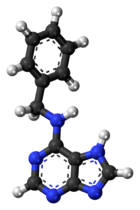
Cabbage, comprising several cultivars of Brassica oleracea, is a leafy green, red (purple), or white biennial plant grown as an annual vegetable crop for its dense-leaved heads. It is descended from the wild cabbage, and belongs to the "cole crops" or brassicas, meaning it is closely related to broccoli and cauliflower ; Brussels sprouts ; and Savoy cabbage.

Broccoli is an edible green plant in the cabbage family whose large flowering head, stalk and small associated leaves are eaten as a vegetable. Broccoli is classified in the Italica cultivar group of the species Brassica oleracea. Broccoli has large flower heads, usually dark green, arranged in a tree-like structure branching out from a thick stalk which is usually light green. The mass of flower heads is surrounded by leaves. Broccoli resembles cauliflower, which is a different but closely related cultivar group of the same Brassica species.

Cauliflower is one of several vegetables in the species Brassica oleracea in the genus Brassica, which is in the Brassicaceae family. It is an annual plant that reproduces by seed. Typically, only the head is eaten – the edible white flesh is sometimes called "curd". The cauliflower head is composed of a white inflorescence meristem. Cauliflower heads resemble those in broccoli, which differs in having flower buds as the edible portion. Brassica oleracea also includes broccoli, Brussels sprouts, cabbage, collard greens, and kale, collectively called "cole" crops, though they are of different cultivar groups.

In organic chemistry, isothiocyanate is the functional group −N=C=S, formed by substituting the oxygen in the isocyanate group with a sulfur. Many natural isothiocyanates from plants are produced by enzymatic conversion of metabolites called glucosinolates. These natural isothiocyanates, such as allyl isothiocyanate, are also known as mustard oils. An artificial isothiocyanate, phenyl isothiocyanate, is used for amino acid sequencing in the Edman degradation.

The Brussels sprout is a member of the Gemmifera cultivar group of cabbages, grown for its edible buds. The leaf vegetables are typically 1.5–4.0 cm (0.6–1.6 in) in diameter and resemble miniature cabbages. The Brussels sprout has long been popular in Brussels, Belgium, from which it gained its name.
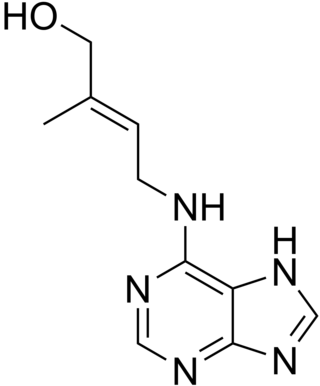
Cytokinins (CK) are a class of plant hormones that promote cell division, or cytokinesis, in plant roots and shoots. They are involved primarily in cell growth and differentiation, but also affect apical dominance, axillary bud growth, and leaf senescence.

Rapini or broccoli rabe is a green cruciferous vegetable, with the leaves, buds, and stems all being edible; the buds somewhat resemble broccoli, but do not form a large head. Rapini is known for its bitter taste, and is particularly associated with Mediterranean cuisine.

Jie lan, gai lan, kai-lan, Chinese broccoli, or Chinese kale is a leafy vegetable with thick, flat, glossy blue-green leaves with thick stems, and florets similar to broccoli. A Brassica oleracea cultivar, jie lan is in the group alboglabra. When gone to flower, its white blossoms resemble that of its cousin Matthiola incana or Hoary Stock. The flavor is very similar to that of broccoli, but noticeably stronger and slightly more bitter.

Broccolini, Aspabroc, or baby broccoli, is a green vegetable similar to broccoli but with smaller florets and longer, thin stalks. It is a hybrid of broccoli and gai lan, both cultivar groups of Brassica oleracea. The name Broccolini is a registered trademark of Mann Packing.

Brassica oleracea is a plant species from family Brassicaceae that includes many common cultivars used as vegetables, such as cabbage, broccoli, cauliflower, kale, Brussels sprouts, collard greens, Savoy cabbage, kohlrabi, and gai lan.

Modified atmosphere packaging (MAP) is the practice of modifying the composition of the internal atmosphere of a package in order to improve the shelf life. The need for this technology for food arises from the short shelf life of food products such as meat, fish, poultry, and dairy in the presence of oxygen. In food, oxygen is readily available for lipid oxidation reactions. Oxygen also helps maintain high respiration rates of fresh produce, which contribute to shortened shelf life. From a microbiological aspect, oxygen encourages the growth of aerobic spoilage microorganisms. Therefore, the reduction of oxygen and its replacement with other gases can reduce or delay oxidation reactions and microbiological spoilage. Oxygen scavengers may also be used to reduce browning due to lipid oxidation by halting the auto-oxidative chemical process. Besides, MAP changes the gaseous atmosphere by incorporating different compositions of gases.
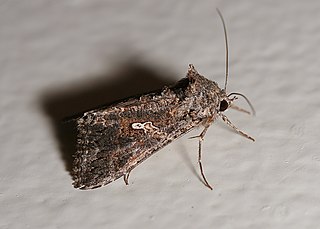
The cabbage looper is a medium-sized moth in the family Noctuidae, a family commonly referred to as owlet moths. Its common name comes from its preferred host plants and distinctive crawling behavior. Cruciferous vegetables, such as cabbage, bok choy, and broccoli, are its main host plant; hence, the reference to cabbage in its common name. The larva is called a looper because it arches its back into a loop when it crawls.
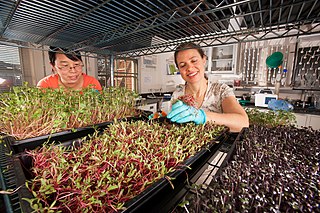
Microgreens are vegetable greens harvested just after the cotyledon leaves have developed with one set of true leaves. They are used as a nutrition supplement, a visual enhancement, and a flavor and texture enhancement. Microgreens are used to add sweetness and spiciness to foods. Microgreens are smaller than “baby greens” because they are harvested very soon after sprouting, rather than after the plant has matured to produce multiple leaves. Among upscale grocers, they are now considered a specialty genre of greens, good for garnishing salads, soups, sandwiches, and plates. They can be used as a main vegetable as well in certain recipes for added flavor and nutrition. Many recipes use them as a garnish while some utilize them as the main ingredient. For example, garlic pea shoots, pea shoots or micro cabbage in cabbage soup, or coleslaw made with radish microgreen instead of cabbage. As microgreens become more popular for their strong flavor and nutrition, chefs and cooks create new ways to use them.

The diamondback moth, sometimes called the cabbage moth, is a moth species of the family Plutellidae and genus Plutella. The small, grayish-brown moth sometimes has a cream-colored band that forms a diamond along its back. The species may have originated in Europe, South Africa, or the Mediterranean region, but it has now spread worldwide.

Heterodera schachtii, the beet cyst eelworm or sugarbeet nematode, is a plant pathogenic nematode. It infects more than 200 different plants including economically important crops such as sugar beets, cabbage, broccoli, and radish. H. schachtii is found worldwide. Affected plants are marked by stunted growth, wilting, yellowing, decreased yields, and death. While there are many methods of control, crop rotation with non-susceptible plants is preferred.

The harlequin cabbage bug, also known as calico bug, fire bug or harlequin bug, is a black stinkbug of the family Pentatomidae, brilliantly marked with red, orange, yellow and white markings. It is a major pest of cabbage and related crops in the Brassicaceae, as well as the ornamental flower cleome throughout tropical and North America, especially the warmer parts of the United States. Nymphs are active during the summer and in the tropics the bug can achieve three to six generations a year. In the northern range there is only one generation annually and the insects overwinter as adults in crop residues or field edges. Organic control involves hand-picking the insects off the plants and being especially careful to remove and destroy all the eggs, which are black-and-white striped, laid in clutches of twelve.

Frozen vegetables are vegetables that have had their temperature reduced and maintained to below their freezing point for the purpose of storage and transportation until they are ready to be eaten. They may be commercially packaged or frozen at home. A wide range of frozen vegetables are sold in supermarkets.

Napa cabbage is a type of Chinese cabbage originating near the Beijing region of China that is widely used in East Asian cuisine. Since the 20th century, it has also become a widespread crop in Europe, the Americas and Australia. In much of the world, it is referred to as "Chinese cabbage". In Australia it also is referred to as "wombok".

Cut flowers are flowers or flower buds that have been cut from the plant bearing it. It is usually removed from the plant for decorative use. Typical uses are in vase displays, wreaths, and garlands. Many home gardeners harvest flowers from their own gardens, but there is a significant international floral industry for cut flowers. The plants cropped vary by climate, culture and the level of wealth locally. Often the plants are raised specifically for the purpose, in field or glasshouse growing conditions. Cut flowers can also be harvested from the wild.
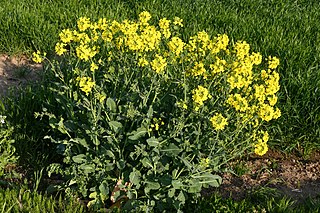
Nanohana (菜の花) is a Japanese generic name for flowers of the Brassicaceae family. The related term, nabana, refers to the flowers and leaf stalks of turnip, napa cabbage, cabbage, brown mustard, zha cai, and broccoli, belonging to the Brassicaceae family, commonly used in Japanese cuisine. A type of nabana, the rapeseed plant, is used to produce rapeseed oil (nataneyu). Nabana is also used for decoration.

